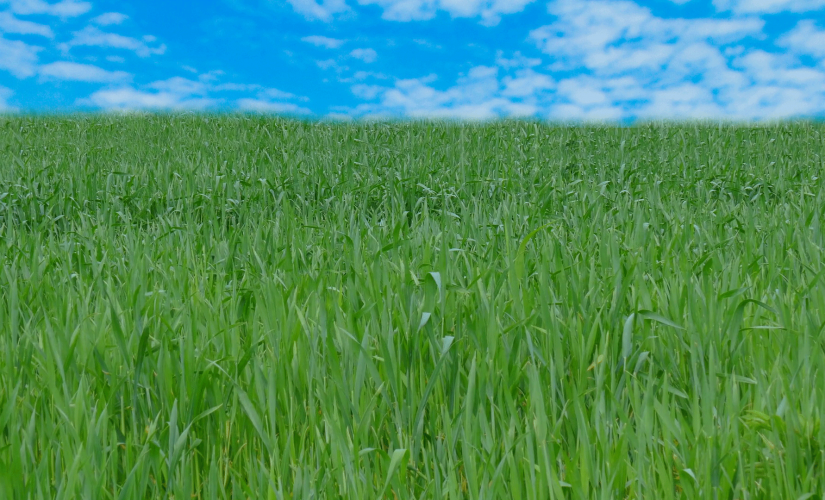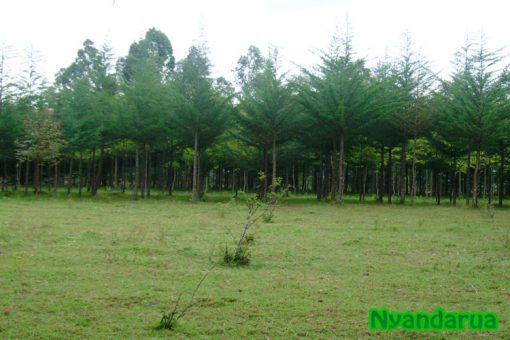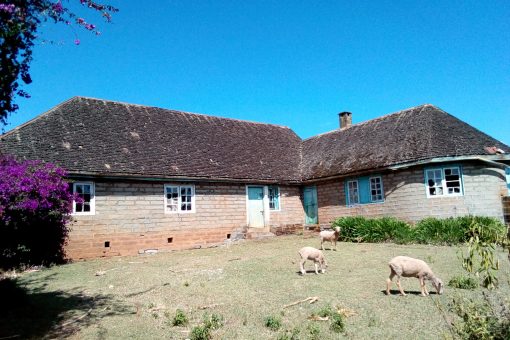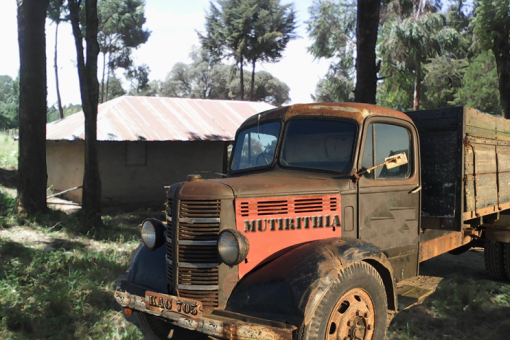Nyandarua was known for two cash crops. Wheat and Pyrethrum. Everywhere you looked, there were fields of wheat swaying in the wind, and beautiful white ‘flowers” waving in another section nearby. My family had 20 acres of wheat and 5 acres of pyrethrum.
Wheat: We loved the wheat fields because there was not much manual labor required from us. Wheat required highly mechanized equipment, giving us a break until much later during its harvest. The 20 acres needed tractors for plowing and harrowing. Tractors also did the planting, dispersing seed and fertilizer together and covering lightly with soil. The grass like blades shot up quickly with their dark green color making the fields look like a beautiful green carpet. The grass like blades grew to their full length, maybe two feet from the ground. They remained green, grew the wheat ears at the top of the blade, while kernels of wheat were growing and maturing inside the hull tightly and systematically packed on the ear. It was at this stage of growth that manual labor was required. Weeds shot up amongst the wheat and we uprooted those by hand. The common weed (thawani) in the wheat was green just like the wheat, making them hard to spot, but when they started flowering, you spotted their bright yellow flowers from miles away and that is when our work in the wheat fields began. We walked inside the wheat plantation uprooting the thawani, making sure we left none behind otherwise they will be waving at our parents when they came to inspect the job.
The green fields started turning golden as the wheat matured. This is when the other difficult job began for us. Swarms of birds invaded wheat farms to feast on the wheat kernels. We were supposed to scare the birds away whichever way we knew how. We made scare crows and placed them strategically all over the wheat fields. At some point those birds figured out the scarecrows were fake and were no longer deterred by them. They swooped onto the wheat right next to the scarecrow, some birds perching on the scarecrow’s “heads” and “arms” to take a break before going in for a second and third helping.
We had to come up with other ways to scare the birds. The true and tested way of scaring the birds away was sound. Not any kind of sound, but really loud noises. We went all over the fields shouting at the top of our lungs to scare the birds away. An added layer of noise was necessary. We carried any piece of steel we could find, like cut out pieces of iron sheets or debes, beating the daylights out of them with metal pipes deafening our own ears in the process. When we got tired of beating the steel and needed a break, we used sling shots (kigutha) shooting rocks at birds that were playing hide and seek with us. As we moved forward, they swooped at the wheat behind us, or flew way ahead of us. We did our best to keep up, but our short legs were no match to their wings. They clearly had the advantage over us. You would think these birds were trained in war tactics, which they used against us every day until the wheat was harvested. I have no idea where these crafty birds came from, but they were relentless.
One positive thing about the bird invasion was that, they let the farmers know the wheat was ready for harvest. Birds only came to eat the dry wheat, never the young green wheat. The farmers kept a close watch and when the swarms of birds started invading, they knew it was time to bring in the harvest – the wheat was ready.




